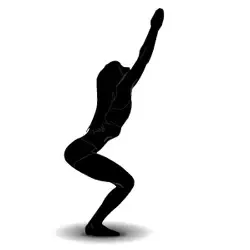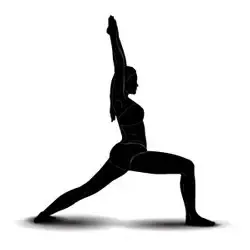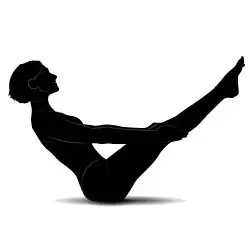For many of us it’s at a “certain age” that exercise with a more mindful approach becomes enormously appealing. The knees all of a sudden are less resilient, the back won’t go where it used to and the hips feel worryingly stiff. In our 20’s, 30’s and maybe even 40’s when many of us enter the fitness and exercise industry as teachers and trainers, this inevitable degeneration just isn’t on the radar. For some of us these physical restrictions begin to lurk in the background and for others it seems to be an “overnight” thing. Whenever it happens “there has to be an easier way” is a thought that begins to percolate to the forefront of the mind. Yoga, Pilates and mind/body fusion exercise suddenly become more appealing choices to safeguard our careers as teachers and trainers.
For others the shift may come simply from and a desire for something that has a more holistic approach and offers the chance to convey a rather more meaningful message.
Whatever the reason for wanting to make the shift into a new genre of teaching, upon enquiry, we soon learn that ancient traditions have a wealth of information about prolonging life, retarding the aging process, how to balance the body and attain peace of mind. Both the yoga tradition and Taoist exercise systems emphasise the importance of regulating the body, breath and mind for harmonious health and wellbeing. Modern fitness, they say, places far too much attention on the cardiovascular system without considering the true role of the breath, authentic strength and stability and being fully present while doing it. Chinese medicine sees modern exercise programmes as being “moments of violent disharmony to the body”!
First Steps – The Journey Begins
“By means of its practice the practitioner receives steadiness, freedom from disease, and lightness of limbs.” Hatha Yoga Pradipika
Novices to yoga usually find the controlled breathing practices (pranayama) and the silence and stillness of meditation particularly difficult. The – habit in the West is to distract the mind wherever possible. Avoiding being present is a strategy we habitually employ to deal with the stresses and strains of life. Exercising while watching screens, listening to music on headphones and “chatting” to a fellow gym member, is not conducive to a holistic outcome according to the ancient traditions. Group exercise classes actually bring the participant closer to a fully present and mindful experience as the participant must concentrate and ‘be present’ to follow the choreography and exercise sequences.
Making the shift from group exercise instructor or personal trainer to yoga teacher can be daunting. It truly is a journey of a thousand miles that begins with the first step onto the mat. The early days of practise can be what yoga describes to be “a gross practise”. One’s first challenge is to just remain upright in the poses and then learn how to transition smoothly and mindfully from one pose to another. Remembering to breathe while holding each pose let alone synchronising the breath when transitioning from pose to pose (vinyasa) is the next level. Especially challenging when we have spent an exercising lifetime ignoring the breath! Breathing is something that just happens as a consequence of increasing exercise intensity. Within a class or two we find yoga has a huge amount to say about breathing and we soon learn how much we never knew that was so important concerning the breathe.
In the beginning we aim to fine-tune our experience within each pose and movement. We become aware that our rather unruly mind often has many habits or opinions that, to name one, can drive us to be overly competitive and cause harm or injury. Our first Yoga injury forces us to pull back and be humble, compassionate and empathetic towards ourselves (ahimsa – non-violence, the first of the five yamas). Sometimes the practise can be “hell on a mat” where the mind is resisting, judging and wanting it to be anything else other than what we are experiencing in that moment, in that pose (dvesha – repulsion, and raja – attachment, two of the five kleshas). Finally when we surrender and allow ourselves to just observe without judgement or wanting to change anything, the experience can be most enlightening.
The Practise (Yoga Shadana)
“Practise and all is coming”. Pattabhi Jois
The level of yoga that is most prevalent in the West today is “bahiranga” (meaning practise) – the external physical quest. This external quest includes the first four limbs of Astanga Yoga, (the Yamas, Niyamas, ethical principles and observances) and the training of the muscles, bones, skin, the inner organic body and the senses. The internal quest (Antaranga sadhana) only begins when the outer body is compliant and pacified. Then the mind can be penetrated.
In other words, it takes many hours on the mat to learn about ourselves, from ourselves. Repetition over a long period of time is what cultivates a “subtle” practise that then paves the way for the internal quest. Learning from a teacher who has a strong personal practise makes them empathetic, knowledgeable and one who can speak from experience. They lead by example and share their challenges and insights attained through “being on the mat”. They can reassure the new and tentative class participant and become an inspiration to learn from. Their dedication and passion becomes infectious. Their classes are much talked about and deemed a ‘must do’ for the novice yogi or yogini as they too begin their external physical quest.
Yoga in the Modern World
Yoga cultivates ways of maintaining a balanced attitude in day-to-day life and endows skill in the performance of one’s actions.” B.K.S. Iyengar
The technological age continues to dominate our lives. We are on the face of it, forced to conform to its unrelenting momentum with no respite and no ‘off’ button. 20 years ago Yoga and Pilates classes were rarely seen in a health club. Today both of these disciplines are in high demand and dominate most health club timetables. It seems Yoga has now become the West’s panacea – a vital life ingredient we have all perhaps unconsciously and collectively selected to ensure we remain physically, mentally and emotionally balanced.
Becoming a yoga teacher has never been more appropriate or timely. Today our purpose (dharma) it seems is to serve our fellow humans with classes that soothe and support mind, body and spirit. Yoga classes in this time of such enormous upheaval and change are making a vital – contribution in sustaining the health of not only the individual participant, but also the planet. A collective consciousness that is more ‘awake’ and at peace is what they say in the ancient traditions will save the world!
Making a Start
- Find an experienced local teacher and begin taking regular classes.
- Consider doing weekend and week-long retreats to cultivate a deeper practise.
- Develop your own daily yoga session and practise, practise, practise. From the moment you step onto the mat – how present are you?
- Begin the transition from Group Exercise, Personal Training or Pilates by incorporating standing yoga poses such as Warrior 1*, and Fierce Pose* as an alternatives to the strength, stability and conditioning section of a class. Use “boat pose”* instead of abdominal curls and “reclining big toe pose”* for flexibility at the end of a class (use a theraband if straps are not available).
- If you are on the brink of teaching your first yoga class and unsure of what to do or say next, it’s OK to have cue cards or a tip sheet!
- External versus internal. How much do you talk when teaching? Observe and then purposely pause, say nothing and allow the class to internalise the experience.
- A yoga good teacher instructs with a voice that is loud and clear but not invasive. Become aware of your voice.
- Avoid distracting conversation that is not relevant to the class or the practise.
- Keep it simple, less is more. Relax, enjoy and become immersed in your new paradigm of teaching.
*see featured poses.
Monica Linford
Monica Linford is the founder of The ChiBall Method™, Wellness Warrior™ and author of “Awaken Your Body, Balance Your Mind”. She has a background in classical ballet, contemporary dance and began studying yoga in Australia 1993. Monica has a unique ability to interpret and explain holistic health concepts in easy-to-understand words and actions. Her teaching and presentations have inspired students and teachers of yoga and mind/body exercise for 20 years in over 14 countries.
TRAINFITNESS
TRAINFITNESS’s Diploma in Yoga Certification has been developed especially for group exercise instructors, teachers of Pilates, mind-body exercise and personal trainers. The training combines a unique blended-learning opportunity that encompasses the ancient teachings of yoga, anatomical precision of the basic yoga poses and practical teaching skills. Particular emphasis is placed on learning how to confidently teach yoga to a broad range of students in a predominantly health club environment.
The TRAINFITNESS Level 3 Yoga Practical Training for autumn 2013:
- Part 1 – 7th & 8th September
- Part 2 – 12th & 13th October
For more information go to: https://train.fitness/yoga-instructor-course
Feature Poses
 |
Fierce Pose (Utkatasana)
|
 |
Warrior Pose (Virabhadrasana)
|
 |
Boat Pose (Navasana)
|
 |
Reclining Big Toe Pose (Supta Padangusthasana)
|
